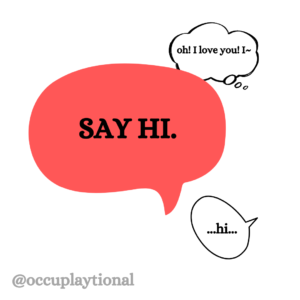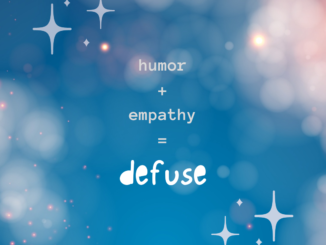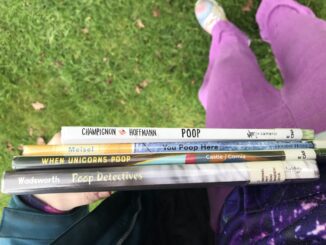My kid saw me through the open door of daycare. Her face lit up, my face lit up, we both did a wiggly happy dance to see each other.
She over-exaggeratedly mouthed, “Hi Mummy!”, because she’s been experimenting with what kinds of nonverbal/nonspeaking communication will be understood—gestures, mouthing, pointing, etc.
I over-exaggeratedly mouthed back, “Hi Summer!”
Her daycare teacher, who was standing in the doorframe next to her — so she couldn’t see her face — said “Aw, Summer, it’s your mum! Aren’t you going to say something?”
It reminded me of a moment in a high school I used to work in. I saw a student I knew, I’ll call him Dylan, a student who had significant support needs and went everywhere with a 1:1 aide. The student was moving down the hallway behind the aide. I saw him and said “hi, Dylan!” and he shyly, happily, authentically waved to me.
Because he was behind the aide, she didn’t see him wave. She prompted “say hi to Ms. Kelsie, Dylan.”
Okay, neither of these scenarios are like bad or terrible or outrageous. They’re the kind of thing that a very reasonable and caring person could do without thinking about it.
They just both stuck out to me, because both *were* moments of authentic connection with a child, that got overridden by prompted social norms from adults who were assuming that the child was incompetent to handle their own socializing. My daughter mechanically said “hi mum”. Dylan mechanically said “Hi.”
And what if my daughter hadn’t said hi to me? What if she was busy playing and had needed a moment for her focus to shift? What if Dylan had seen a therapist he didn’t like and his subtle method of self-advocacy was to own, at very least, his own willingness to greet them, his own voice? Or what if he’d simply been thinking his own pleasant thoughts and enjoying them and my passing by didn’t need to interrupt that?
I don’t know. Just some musing on the way we police children (and disabled people of all ages, to some degree).

[Image description: There is a small white thought bubble thinking, “oh! I love her! I~” before being interrupted by a very large speech bubble in red from the other side of the image that demands, “SAY HI.” Then there is another small speech bubble in white saying “…hi…” very hesitantly and still in a “small voice”. End description.]



